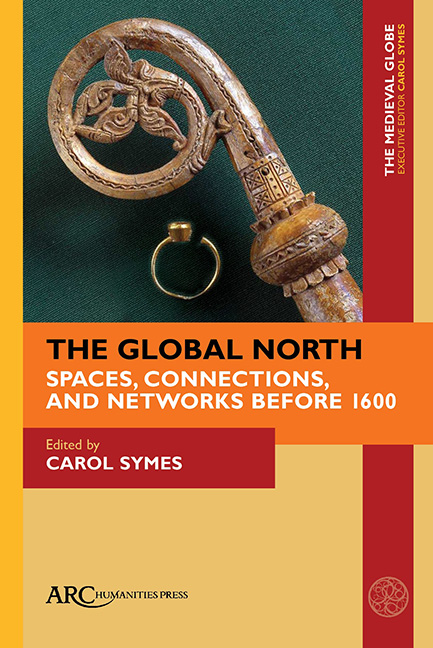Book contents
- Frontmatter
- Contents
- List Of Illustrations
- Introduction: Exploring the Global North, from the Iron Age to the Age of Sail
- Contesting Marginality: The Boreal Forest of Middle Scandinavia and the Worlds Outside
- Archaeological Evidence for Staraya Lagoda as an Early Scandinavian Emporium of the Global North
- Gunhild’s Cross and the North Atlantic Trade Sphere
- The Far North in the Eyes of Adam of Bremen and the Anonymous Author of the Historia Norwegie
- The Multi-Layered Spatiality of the Global North: Spatial References and Spatial Constructions in Medieval East Norse Literature
- Military Migration in the Baltic Sea Region, ca. 1400–1620
- Old and New Land in the North and West: The North Atlantic on the Medieval Globe around 1500
- Index
Military Migration in the Baltic Sea Region, ca. 1400–1620
Published online by Cambridge University Press: 20 January 2022
- Frontmatter
- Contents
- List Of Illustrations
- Introduction: Exploring the Global North, from the Iron Age to the Age of Sail
- Contesting Marginality: The Boreal Forest of Middle Scandinavia and the Worlds Outside
- Archaeological Evidence for Staraya Lagoda as an Early Scandinavian Emporium of the Global North
- Gunhild’s Cross and the North Atlantic Trade Sphere
- The Far North in the Eyes of Adam of Bremen and the Anonymous Author of the Historia Norwegie
- The Multi-Layered Spatiality of the Global North: Spatial References and Spatial Constructions in Medieval East Norse Literature
- Military Migration in the Baltic Sea Region, ca. 1400–1620
- Old and New Land in the North and West: The North Atlantic on the Medieval Globe around 1500
- Index
Summary
HOW GLOBAL WAS the premodern North? I intend to address this question from a military point of view and to discuss whether a global perspective is applicable to the period and region in that respect. In the premodern era, warfare was a central pursuit among many European polities, and the expansion of the early modern military market is often associated with the growth of centralized states. Knut J. V. Jespersen argues that, before the Thirty Years’ War (1618–1648), wars in the Baltic Sea region had been “fought in splendid isolation” and that it was not until this conflict that the region was really connected with the international European military–political system. Given that the subsequent decline of mercenary armies in the eighteenth century seems connected to state consolidation and the development of standing national armies, the global window of military migration in the Baltic region is largely associated with the seventeenth century. In this essay, however, I want to investigate whether a global perspective on the Baltic region is also valid during the preceding period of military migration. For my purposes, this region comprises the territories and polities touching on the shores of the Baltic Sea, although the Holy Roman Empire, Poland, Lithuania, and Muscovy also had vast inland territories, which I do not include.
During the early Middle Ages, centrifugal forces in the Baltic region promoted the outward migration of Vikings and other warriors. Danes and Norwegians travelled to western Europe and the British isles. Swedes travelled along the eastern rivers to the Caspian Sea, the Black Sea, and further south to Constantinople, where the Varangian guard served the Byzantine emperor. The rich early findings of Arab coin and ceramics in Scandinavia testify to the intensive connections with distant regions. Some hypotheses also locate the geographic origins of Goths, Lombards, and other migrating military federations of late antiquity to the southern Baltic. It is unknown whether these military migrations were due to social, economic, or political push-or-pull factors, but the centrifugal trend is quite clear: many more warriors left the Baltic region than arrived there.
During the later Middle Ages, however, the tide turned and centripetal forces drew soldiers back into the region. The earliest cause was the Northern Crusades, which enticed knights from western Germany, the Low Countries, and Denmark to Pomerania, Prussia, and Livonia.
- Type
- Chapter
- Information
- The Global NorthSpaces, Connections, and Networks before 1600, pp. 115 - 130Publisher: Amsterdam University PressPrint publication year: 2021

